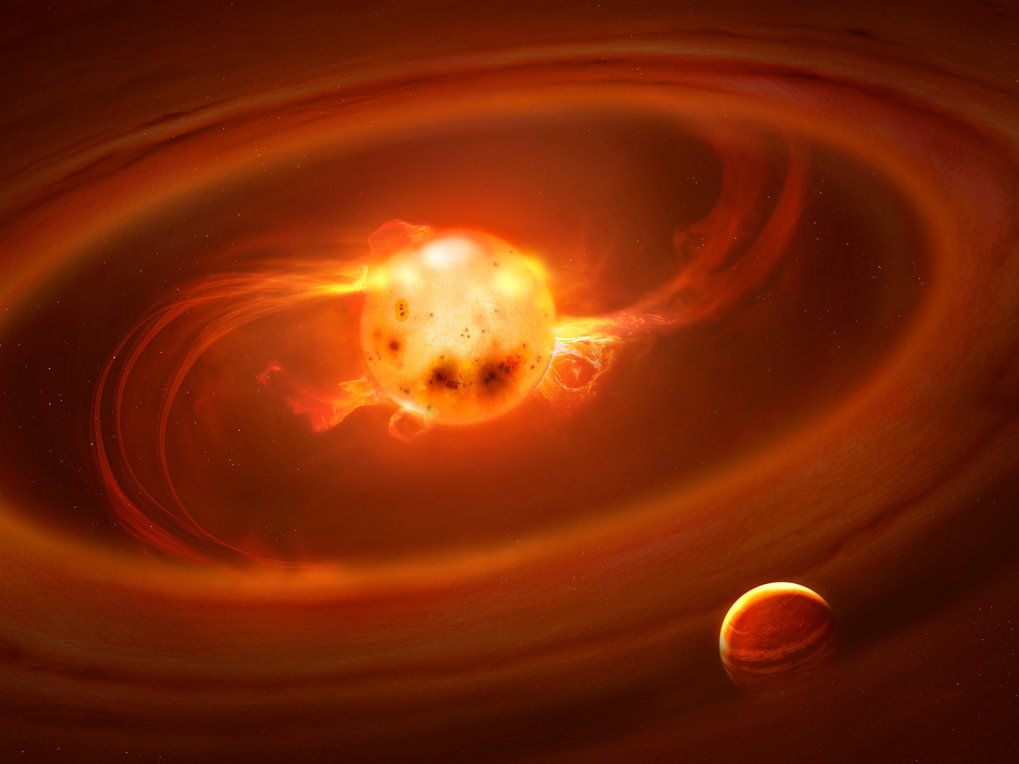Max Planck Institute for Astronomy (MPIA) | Max Planck Society (MPG) | 2020 Aug 26
Gas reaches young stars along magnetic field lines
Astronomers have used the GRAVITY instrument to study the immediate vicinity of a young star in more detail than ever before. Their observations confirm a thirty-year-old theory about the growth of young stars: the magnetic field produced by the star itself directs material from a surrounding accretion disk of gas and dust onto its surface. The results ... help astronomers to better understand how stars like our Sun are formed and how Earth-like planets are produced from the disks surrounding these stellar babies.
When stars form, they start out comparatively small and are located deep inside a cloud of gas. Over the course of the next hundreds of thousands of years, they draw more and more of the surrounding gas onto themselves, increasing their mass in the process. Using the GRAVITY instrument, a group of researchers ... has now found the most direct evidence yet for how that gas is funnelled onto young stars: it is guided by the star's magnetic field onto the surface in a narrow column.
The relevant length scales are so small that even with the best telescopes currently available no detailed images of the process are possible. Still, using the latest observation technology, astronomers can at least glean some information. For the new study, the researchers made use of the superbly high resolving power of the instrument called GRAVITY. It combines four 8-meter VLT telescopes of the European Southern Observatory (ESO) at Paranal observatory in Chile into a virtual telescope that can distinguish small details as well as a telescope with a 100-meter-mirror could. ...
A Measure of the Size of the Magnetospheric Accretion Region in TW Hydrae ~ GRAVITY Collaboration
- Nature 584(7822):547 (27 Aug 2020) DOI: 10.1038/s41586-020-2613-1
Pre-Transitional Disk System DoAr 44 Using VLTI/GRAVITY ~ J. Bouvier et al
- Astronomy & Astrophysics 636:A108 (Apr 2020) DOI: 10.1051/0004-6361/202037611
- arXiv.org > astro-ph > arXiv:2004.00848 > 02 Apr 2020
